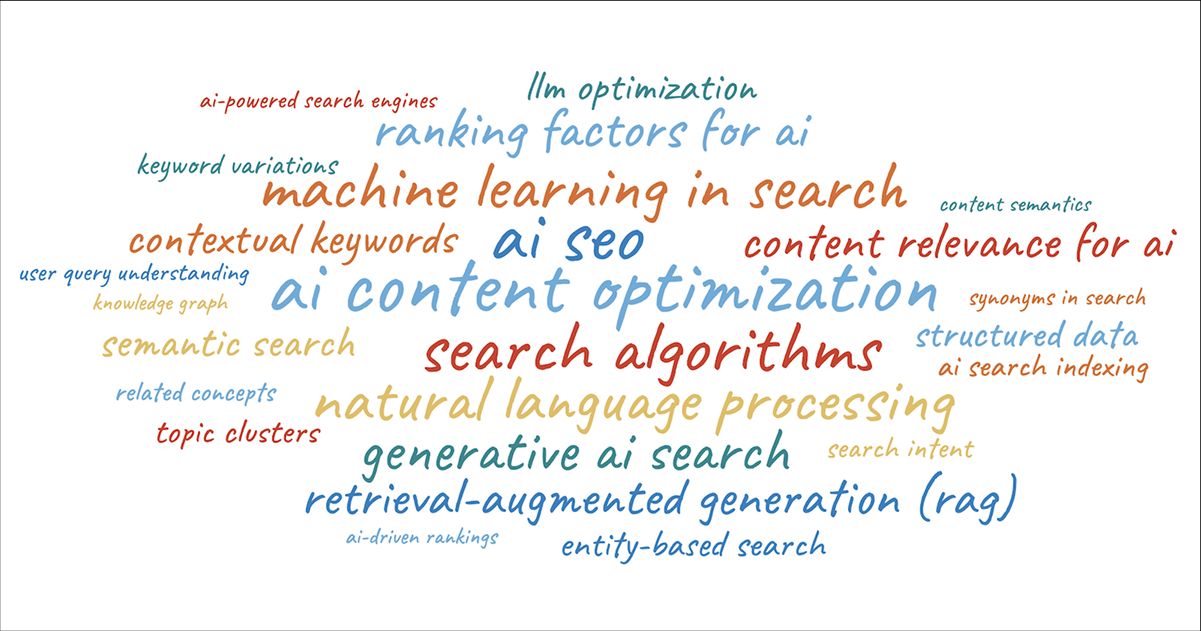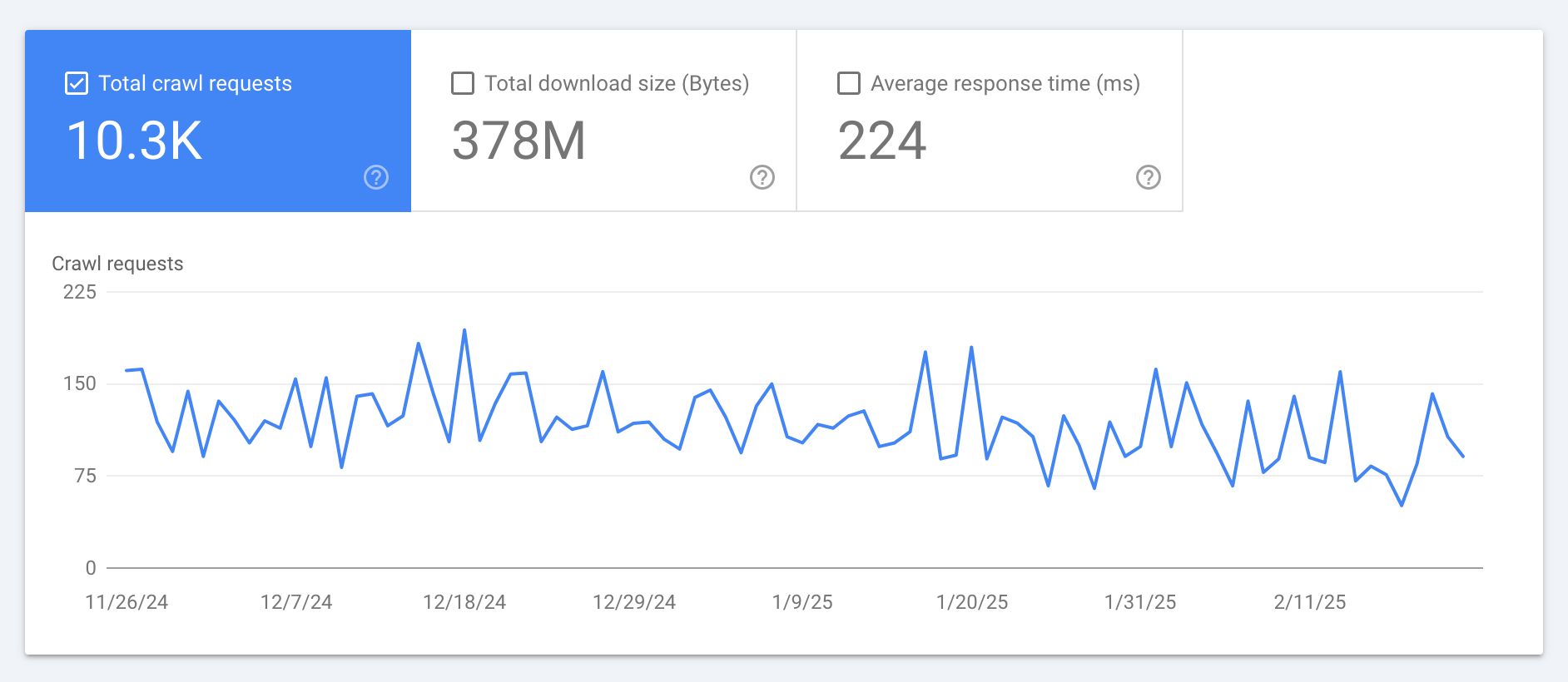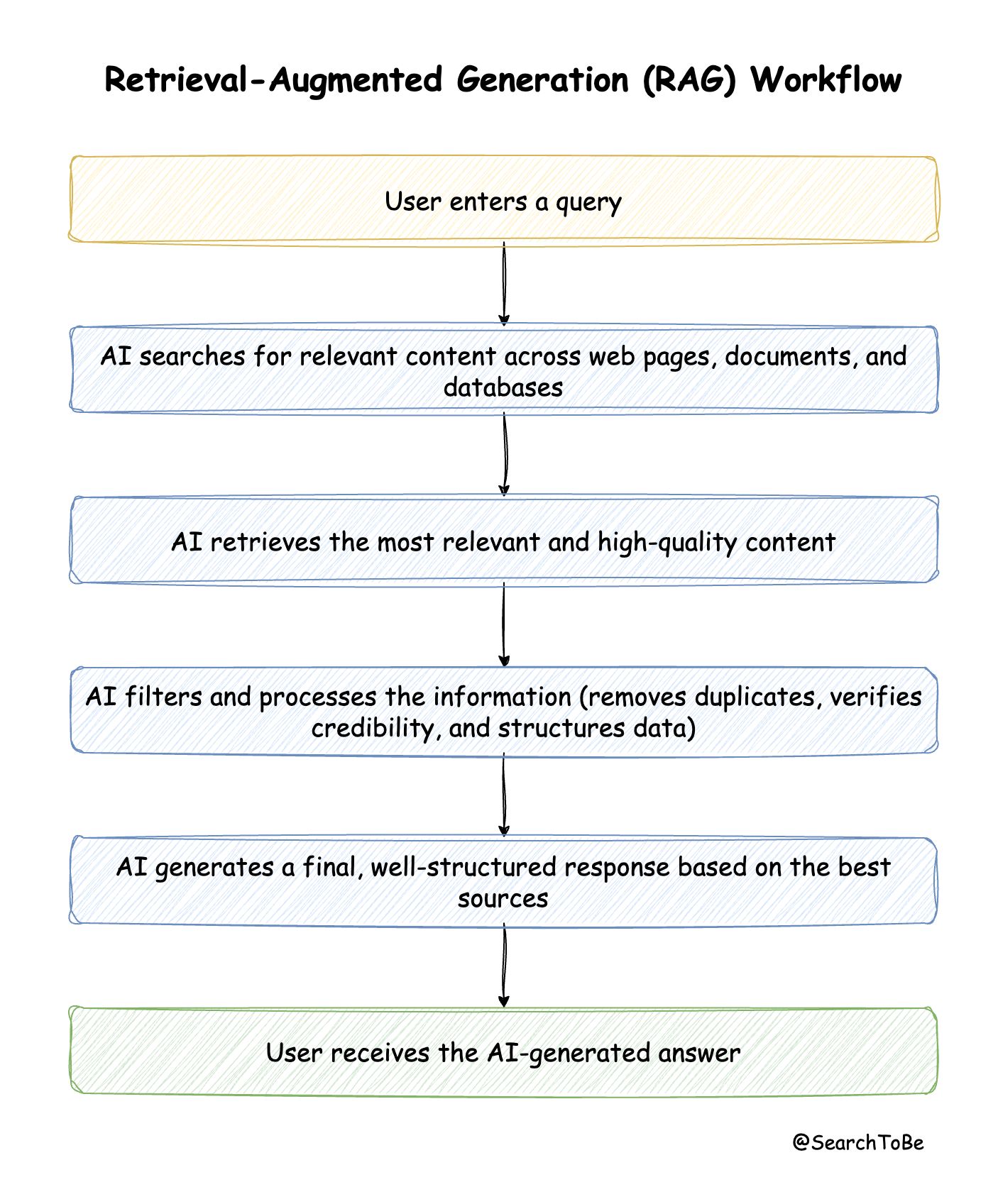How to optimize your content for AI search: AI SEO & GEO guide
AI search engines like ChatGPT, Google Gemini, and Perplexity are changing how people find information. Unlike Google's traditional search, which ranks websites using links and keywords, AI search engines scan the web, pick the most relevant content, and generate direct answers.
People are searching differently too. Instead of typing "best email tools" and clicking through multiple links, users now ask complete questions like "What email marketing tool works best for small businesses with under 100 customers?", and AI gives them a complete answer right away.
This shift requires a new approach called AI SEO (also known as Generative Engine Optimization or GEO). If you want AI to show your content in search results, you need to optimize it differently than traditional SEO.
Let's break down the steps to make sure your content gets noticed by AI.
1. Use semantic terms to improve AI understanding
AI search engines do not rely solely on exact-match keywords like traditional SEO. Instead, they use semantic search, which means they analyze word relationships, synonyms, and contextual meaning to understand the overall topic of a piece of content.
Unlike typical search engines, which match exact keywords, AI search engines utilize natural language processing (NLP) to understand the meaning behind a search. They look for content that fully explains a topic instead of just repeating keywords.

Some ways to improve AI understanding:
Identify related terms and variations
- Instead of overusing the same keyword, use synonyms and conceptually related words to show depth of understanding.
- Example: If you're writing about email marketing, also include terms like newsletter optimization, email engagement, email automation, open rates, and more.
Use structured sentences that help AI understand context
- AI prioritizes content that explicitly answers questions.
- Example: Instead of a vague statement like "timing matters in email marketing", write: "The best time to send marketing emails is between 8 AM - 10 AM on weekdays."
Prefix content with explicit context for AI
- Adding clear context at the beginning of content helps AI understand what it's about.
- Example: "The following content explains the best practices for AI search optimization."
If someone searches for "best time to post on Instagram", an AI model will prioritize an article that mentions related terms like "social media engagement," "Instagram analytics," and "content scheduling" rather than an article that only repeats "Instagram post timing" multiple times.
How people search with AI is different
AI search is more conversational. People don't just search once anymore. They have back-and-forth conversations with AI, refining their questions based on the answers they get.
For example:
- First question: "What are the best Instagram posting times?"
- Follow-up: "What about for food businesses specifically?"
- Another follow-up: "How do I track if these times work for my restaurant?"
Each question builds on the previous answer. This means your content should anticipate follow-up questions and provide comprehensive information that covers the full topic.
AI breaks down complex questions
Here's something important: AI doesn't just look for one piece of content to answer a question. It breaks complex questions into smaller parts and pulls information from different sources to build a complete answer.
For example, if someone asks "How do I start an email newsletter for my bakery?", AI might break this into:
- What email platform works for small businesses?
- How often should bakeries send newsletters?
- What content should bakeries include in emails?
- How do you grow an email list for a local business?
This means your content works better when it covers related topics thoroughly, not just the main question.
2. Make sure AI can read your website
Before your content can be included in AI-powered search results, AI bots must be able to crawl, understand, and retrieve it. If AI search engines cannot access your website properly, your content will not appear in search results.
There are several technical issues that can prevent AI from reading your website correctly. Some websites might accidentally block AI bots, while others use technologies that make content invisible to AI crawlers.
Checklist: Is your website AI-friendly?
| Check | Solution |
|---|---|
| Is your website blocking AI bots? | Check your robots.txt file and make sure AI crawlers are allowed. |
| Does your website use heavy JavaScript? | Make sure all important content is in HTML. |
| Do your webpages load very slow? | Improve load times with image compression & caching. |
You can also check your Google Search Console crawl stats to see if Google can access your website. If Google bots can crawl it, other AI bots probably can too.

3. Build authority & credibility
AI search engines prioritize trusted and authoritative sources when generating responses. If your website has low credibility or is rarely mentioned online, AI models may ignore your content in favor of more popular ones.
Building credibility takes time, but it is one of the most effective ways to increase your content's chances of being referenced by AI. Actually, AI search engines scan high-authority websites, review platforms, and trusted blogs to find the most reliable information.
Here's how to build authority and make AI trust your content:
Get featured on authoritative websites
- AI frequently pulls information from Wikipedia, major news sites, and industry publications.
- Aim to get mentions, guest posts, or citations from these trusted platforms.
Encourage positive customer reviews
- Many AI search engines scan review platforms like Trustpilot, Yelp, and Google Reviews to determine brand reputation.
- Encourage satisfied customers to leave genuine reviews, but follow the platform's guidelines to avoid penalties.
For example, if an AI model is asked about "best SEO tools," it might pull information from G2 or Capterra rather than a random blog. And if your tool has better reviews, it will be more likely to be included in the AI response.
3. Structure content into clear, standalone chunks
AI systems don't read entire pages like humans do. They break content into small "chunks" or passages, then pick the best chunk to answer a question. If your content is badly organized, AI might skip it entirely.
Think of each paragraph as a potential answer on its own. Here's how to structure content that AI can easily extract:
Make each paragraph focus on one clear idea
- Instead of mixing multiple concepts in one paragraph, separate them.
- Each paragraph should make sense even if someone reads it alone.
- Use specific nouns instead of words like "this," "that," or "it."
Bad example: "It offers many benefits. This includes better performance and cost savings. They help businesses grow."
Good example: "Email automation offers three main benefits for businesses. First, automated emails improve open rates by 30% compared to manual sends. Second, automation reduces labor costs by eliminating manual campaign management."
Use clear headings and subheadings
AI uses your headings to understand what each section is about. Make your headings descriptive and question-based:
- Instead of "Benefits," use "What are the benefits of email automation?"
- Instead of "Setup," use "How to set up email automation in 5 steps"
- Instead of "Pricing," use "How much does email automation cost?"
Format information in lists and tables
AI handles structured content better than long paragraphs. Use:
- Bullet points for features or benefits
- Numbered lists for step-by-step processes
- Tables for comparisons or data
- Short sentences that get to the point quickly
Make content that works in pieces
Think of your content like building blocks. AI might take just one paragraph or one list item to answer someone's question. Each piece should make sense on its own.
For example, if you write about "social media marketing," create separate, complete sections for:
- How much does social media marketing cost?
- What are the best social media platforms for small businesses?
- How often should businesses post on social media?
- What metrics should you track for social media success?
This way, when AI needs to answer "How much does social media marketing cost?", it can grab that specific section and give a complete answer.
4. Master AI SEO with retrieval-augmented generation
AI search engines work differently from Google's or other search engines' ranking-based systems. Instead of only ranking pages, AI search uses a method called Retrieval-Augmented Generation (RAG), which allows AI models to:
- Retrieve relevant content from different sources
- Combine the best information to generate an answer

This means that even if your content is not ranked #1 on Google, it can still be retrieved by AI if it provides clear, valuable, and factual information. To improve your AI SEO performance (see other names for AI SEO), make sure to:
Write content that answers common questions directly
- AI looks for concise, well-structured answers that can be easily extracted.
- Use FAQs, numbered lists, and summaries to make retrieval easier.
Make sure your content is easy to understand
- AI prefers clear, well-organized text over long, complex paragraphs, so don't make your content unnecessarily long.
- Use headings, bullet points, tables, images, and short sentences to improve readability.
For example, if AI is asked, "What is the best time to post on Instagram?" it will scan top-ranking blog posts to generate an answer. And if your content is relevant and easy to understand, AI will prefer it over a more complex but less relevant answer.
5. Write with specific entities and clear relationships
AI works better when you use specific names and clear connections between concepts. Instead of vague terms, use exact names of people, places, products, and companies.
Use specific entity names
- Instead of "this tool," say "Google Analytics"
- Instead of "the company," say "Apple" or "Microsoft"
- Instead of "popular social platform," say "Instagram"
- Instead of "the study," say "the 2024 HubSpot Marketing Report"
Write clear subject-verb-object sentences
AI understands simple sentences better than complex ones. Structure your sentences like this:
- "Google Analytics tracks website traffic" (not "Traffic tracking is handled by Google Analytics")
- "Email automation increases open rates by 25%" (not "Open rates can be improved through automation")
- "Small businesses use Mailchimp for email marketing" (not "Mailchimp is used by small businesses")
6. Use data, quotes, and citations
Just like search engines, AI search engines prioritize content that includes verified data, expert quotes, and proper citations (this research paper explains it very well). This helps AI determine the reliability of the information and improves the chances of your content being included in search results. Below are some tips:
Include statistics and research-backed data
- AI favors content with numbers and percentages over vague statements.
- Example: "80% of marketers say AI improves content creation." (Source: HubSpot)
Use expert quotes
- AI recognizes expert opinions as more authoritative.
- Example: "The key to artificial intelligence has always been the representation." – Jeffrey Hawkins, Neuroscientist
Cite sources properly
- Instead of "AI is changing marketing," write something like:
- AI marketing is expected to grow to $107.5 billion by 2028 (Source: Statista).
But why does this work? Because AI models scan for factual accuracy, and content with statistics and sources is more likely to be retrieved and referenced.
7. Keep doing traditional SEO
Even though AI search is growing, traditional SEO is still important. AI search engines often scan Bing, Google, Brave, and other search engines top results before generating answers, so ranking well in traditional search engines improves your AI visibility.
- Write for humans first. AI values clear, readable content.
- Write descriptive meta titles and descriptions as AI scans metadata to understand the context of a page.
- Use structured headings (H1, H2, H3) because AI organizes content better when it's well-structured.
- Keep URLs simple. Example:
site.com/ai-search-guideinstead ofsite.com/p=123xyz. - Also optimize for Bing and Brave because AI-powered search engines often use these instead of Google.
If you're doing programmatic SEO, make sure you follow all pSEO best practices.
8. Understand LLMs
Understanding how large language models (LLMs) work can give you an edge in optimizing your content. I would recommend, to start with, this detailed video by Andrej Karpathy, a former AI researcher at OpenAI.
You can also go through these related research papers, if you're looking to dive deeper.
The shift from traditional SEO to AI SEO or GEO
The industry is calling this new approach AI SEO or Generative Engine Optimization (GEO) instead of traditional SEO. While traditional SEO focuses on ranking in search results, AI SEO and GEO focus on being part of the AI-generated answer.
Here's the difference:
- Traditional SEO goal: Get your link to show up in search results
- AI SEO/GEO goal: Get your content used in the AI's direct answer
This doesn't mean traditional SEO is dead. Both AI SEO and traditional SEO work together. But as more people get their answers directly from AI without clicking links, being part of that answer becomes more important.
Different AI platforms work differently
Not all AI search engines work the same way. Here's what you should know:
- Google AI Overviews: Pulls from websites Google already indexes
- ChatGPT search: Uses web browsing to find recent information
- Perplexity: Combines real-time web search with AI responses
- Claude: Focuses on accuracy and includes source citations
Each platform has its own way of finding and presenting information, but they all reward the same things: clear, well-structured, trustworthy content.
Why people click less but engage more
Here's something interesting: when people do click through from AI search results, they're usually more serious about taking action. AI has already filtered out casual browsers, so the traffic you get tends to be higher quality.
Think of it this way: someone who asks AI "What's the best project management tool for remote teams under 50 people?" and then clicks your link is probably closer to buying than someone who just typed "project management tools" into Google.
How to write better prompts (and why it matters for your content)
As people get better at asking AI detailed questions, the content that wins will be the content that answers these detailed questions well.
Vague questions get generic answers:
- "How do I do email marketing?" → Generic tips that could apply to anyone
Detailed questions get specific answers:
- "How do I set up automated welcome emails for my online course business?" → Specific, actionable advice
When you create content, think about the detailed questions your audience might ask. The more specific you can be, the more likely AI will choose your content for these detailed searches.
Pro tip: Write your content to answer questions like you're talking to a friend who's asking for specific help, not like you're writing a general guide for everyone.
Final Thoughts
AI SEO and GEO aren't just about keywords anymore. You need to:
- Make your site AI-friendly (allow bots to read it).
- Structure content into clear, extractable chunks that work as standalone pieces.
- Build credibility (get cited on trusted sites).
- Use specific entities and clear relationships in your writing.
- Create content that answers detailed, specific questions.
- Anticipate follow-up questions and cover topics thoroughly.
- Optimize for AI retrieval (use data, citations, and clear answers).
- Keep up with both SEO and AI trends to stay ahead.
The businesses that start adapting now will have a significant advantage over competitors who ignore these changes. AI search is still evolving, but the patterns are already clear.
Stay Updated
Get the latest AI SEO insights delivered to your inbox. 1-2 emails/month, no spam.
Thank you!
You're now on the list. We'll send you the latest AI SEO insights soon.

